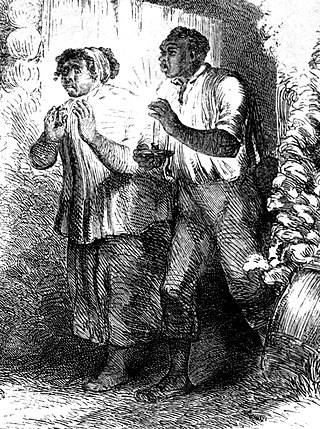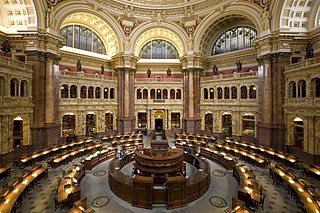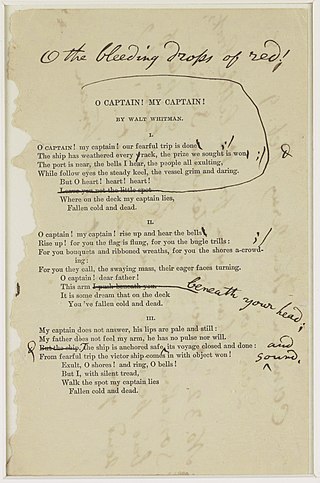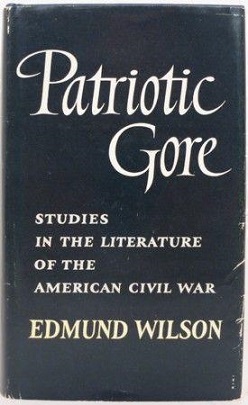Related Research Articles

Uncle Tom is the title character of Harriet Beecher Stowe's 1852 novel Uncle Tom's Cabin. The character was seen by many readers as a ground-breaking humanistic portrayal of a slave, one who uses nonresistance and gives his life to protect others who have escaped from slavery. However, the character also came to be seen as inexplicably kind to white slaveholders, especially based on his portrayal in pro-compassion dramatizations. This led to the use of Uncle Tom – sometimes shortened to just a Tom – as a derogatory epithet for an exceedingly subservient person or house negro, particularly one aware of their own lower-class racial status.

Uncle Tom's Cabin; or, Life Among the Lowly is an anti-slavery novel by American author Harriet Beecher Stowe. Published in two volumes in 1852, the novel had a profound effect on attitudes toward African Americans and slavery in the U.S., and is said to have "helped lay the groundwork for the [American] Civil War".

Delia Salter Bacon was an American writer of plays and short stories and Shakespeare scholar. She is best known for her work on the authorship of Shakespeare's plays, which she attributed to social reformers including Francis Bacon, Sir Walter Raleigh and others.

Harriet Elisabeth Beecher Stowe was an American author and abolitionist. She came from the religious Beecher family and became best known for her novel Uncle Tom's Cabin (1852), which depicts the harsh conditions experienced by enslaved African Americans. The book reached an audience of millions as a novel and play, and became influential in the United States and in Great Britain, energizing anti-slavery forces in the American North, while provoking widespread anger in the South. Stowe wrote 30 books, including novels, three travel memoirs, and collections of articles and letters. She was influential both for her writings and for her public stances and debates on social issues of the day.

Dred: A Tale of the Great Dismal Swamp is the second popular novel from American author Harriet Beecher Stowe. It was first published in two volumes by Phillips, Sampson and Company in 1856. Although it enjoyed better initial sales than her previous, and more famous, novel Uncle Tom's Cabin, it was ultimately less popular. Dred was of a more documentary nature than Uncle Tom's Cabin and thus lacked a character like Uncle Tom to evoke strong emotion from readers.

American literature is literature written or produced in the United States of America and in the colonies that preceded it. The American literary tradition thus is part of the broader tradition of English-language literature, but also includes literature of other traditions produced in the United States and in other immigrant languages. Furthermore, a rich tradition of oral storytelling exists amongst Native American tribes.
This article contains information about the literary events and publications of 1852.

Francis Otto Matthiessen was an educator, scholar and literary critic influential in the fields of American literature and American studies. His best known work, American Renaissance: Art and Expression in the Age of Emerson and Whitman, celebrated the achievements of several 19th-century American authors and had a profound impact on a generation of scholars. It also established American Renaissance as the common term to refer to American literature of the mid-nineteenth century. Matthiessen was known for his support of liberal causes and progressive politics. His contributions to the Harvard University community have been memorialized in several ways, including an endowed visiting professorship.

Annie Adams Fields was an American writer. Among her writings are collections of poetry and essays as well as several memoirs and biographies of her literary acquaintances. She was also interested in philanthropic work, in which she found her greatest pleasure. Her later years were spent as a companion to author Sarah Orne Jewett.
African American literature is the body of literature produced in the United States by writers of African descent. It begins with the works of such late 18th-century writers as Phillis Wheatley. Before the high point of enslaved people narratives, African-American literature was dominated by autobiographical spiritual narratives. The genre known as slave narratives in the 19th century were accounts by people who had generally escaped from slavery, about their journeys to freedom and ways they claimed their lives. The Harlem Renaissance of the 1920s was a great period of flowering in literature and the arts, influenced both by writers who came North in the Great Migration and those who were immigrants from Jamaica and other Caribbean islands. African American writers have been recognized by the highest awards, including the Nobel Prize given to Toni Morrison in 1993. Among the themes and issues explored in this literature are the role of African Americans within the larger American society, African-American culture, racism, slavery, and social equality. African-American writing has tended to incorporate oral forms, such as spirituals, sermons, gospel music, blues, or rap.

A Key to Uncle Tom's Cabin is a book by American author Harriet Beecher Stowe. It was published to document the veracity of the depiction of slavery in Stowe's anti-slavery novel Uncle Tom's Cabin (1852). First published in 1853 by Jewett, Proctor & Worthington, the book also provides insights into Stowe's own views on slavery.
Richard Warrington Baldwin Lewis was an American literary scholar and critic. He gained a wider reputation when he won a 1976 Pulitzer Prize for Biography or Autobiography, the first National Book Critics Circle Award for nonfiction, and a Bancroft Prize for his biography of Edith Wharton. The New York Times called the book "a beautifully wrought, rounded portrait of the whole woman, including the part of her that remained in shade during her life" and said that the "expansive, elegant biography ... can stand as literature, if nothing else."

"O Captain! My Captain!" is an extended metaphor poem written by Walt Whitman in 1865 about the death of U.S. president Abraham Lincoln. Well received upon publication, the poem was Whitman's first to be anthologized and the most popular during his lifetime. Together with "When Lilacs Last in the Dooryard Bloom'd", "Hush'd Be the Camps To-day", and "This Dust was Once the Man", it is one of four poems written by Whitman about the death of Lincoln.
Literature of the 19th century refers to world literature produced during the 19th century. The range of years is, for the purpose of this article, literature written from (roughly) 1799 to 1900. Many of the developments in literature in this period parallel changes in the visual arts and other aspects of 19th-century culture.
Nationality words link to articles with information on the nation's poetry or literature.
Christopher Benfey is an American literary critic and Emily Dickinson scholar. He is the Mellon Professor of English at Mount Holyoke College.
Nationality words link to articles with information on the nation's poetry or literature.

David S. Reynolds is an American literary critic, biographer, and historian who has written about American literature and culture. He is the author or editor of fifteen books, on the Civil War era—including figures such as Walt Whitman, Abraham Lincoln, Herman Melville, Nathaniel Hawthorne, Edgar Allan Poe, Ralph Waldo Emerson, Henry David Thoreau, Emily Dickinson, Harriet Beecher Stowe, George Lippard, and John Brown. Reynolds has been awarded the Bancroft Prize, the Lincoln Prize, the Christian Gauss Award, the Ambassador Book Award, the Gustavus Myers Book Award, the John Hope Franklin Prize, and was a finalist for the National Book Critics Circle Award. He is a regular reviewer for The New York Times Book Review.

Patriotic Gore: Studies in the Literature of the American Civil War is a 1962 book of historical and literary criticism written by Edmund Wilson. It consists of 16 chapters about the works and lives of almost 30 writers, including Ambrose Bierce, George Washington Cable, Mary Boykin Chesnut, Kate Chopin, John William De Forest , Charlotte Forten, Ulysses Grant, Francis Grierson, Nathaniel Hawthorne, Hinton Rowan Helper, Oliver Wendell Holmes, Jr., Henry James, Sidney Lanier, Abraham Lincoln, John S. Mosby, Frederick Law Olmsted, Thomas Nelson Page, Harriet Beecher Stowe, Albion W. Tourgée John Townsend Trowbridge, Mark Twain, and Walt Whitman. In addition to De Forest, Wilson pays particular attention to Cable, Grant, Grierson, Holmes, and Stowe, choices considered "catholic and unexpected" at the time of its publication.
American Renaissance is the period from 1876 to 1917 characterized by renewed national self-confidence and a feeling that the United States was the heir to Greek democracy, Roman law, and Renaissance humanism.
References
- 1 2 3 Boswell, Jeanetta. The American Renaissance and the Critics. Wakefield: Longwood Academic. ISBN 0-89341-599-5.
- ↑ Knight, Denise D. Writers of the American Renaissance: An A-to-Z Guide. Westport, Conn.: Greenwood Press, 2003: XI.
- ↑ "Retired Site - PBS Programs - PBS". PBS.org. Retrieved April 23, 2017.
- ↑ Lauter, Paul. A Companion to American Literature and Culture. Chichester; Malden, MA: Wiley-Blackwell, 2010: 68 ISBN 0-631-20892-5
- ↑ Howe, Daniel Walker. What Hath God Wrought? The Transformation of America, 1815–1848. New York: Oxford University Press, 2007: 615. ISBN 978-0-19-507894-7
- 1 2 3 4 5 Baym; Levine. "American Literature 1820-1865". The Norton Anthology of American Literature. New York: W.W. Norton & Company. pp. 445–463. ISBN 0393918858.
- ↑ Lease, Benjamin (1972). That Wild Fellow John Neal and the American Literary Revolution. Chicago, Illinois: University of Chicago Press. p. 69. ISBN 9780226469690.
- 1 2 3 Reynolds, David (1988). Beneath the American Renaissance . New York: Alfred A. Knopf, Inc. ISBN 9780394544489.
- ↑ Buell, Lawrence. Emerson. Cambridge and London: Harvard University Press, 2003: 145.
- ↑ Cain, William E. F.O. Matthiessen and the Politics of Criticism. Madison: University of Wisconsin Press, 1988: 168.
- 1 2 Howe, Lawrence; Layson, Hana (2014). "The American Renaissance in Context" . Retrieved November 10, 2015.
- ↑ Jarrett, Gene Andrew. A Companion to African American Literature. Chichester, U.K.; Malden, MA: Wiley-Blackwell, 2010: 103.